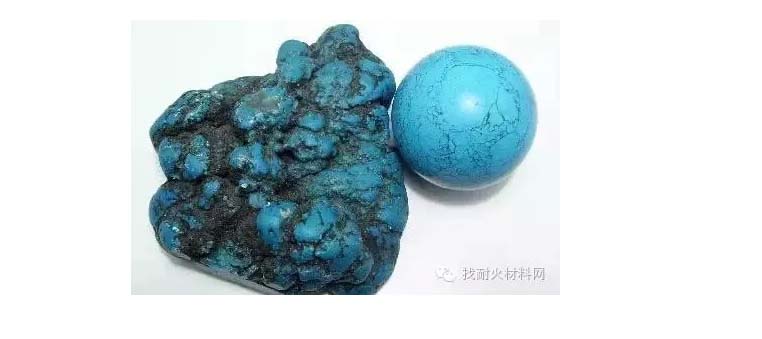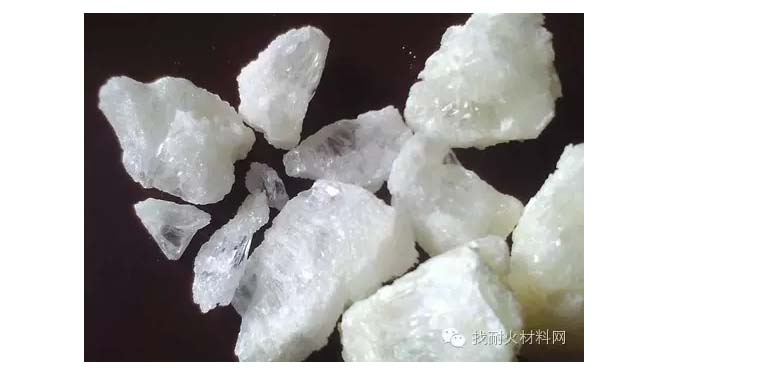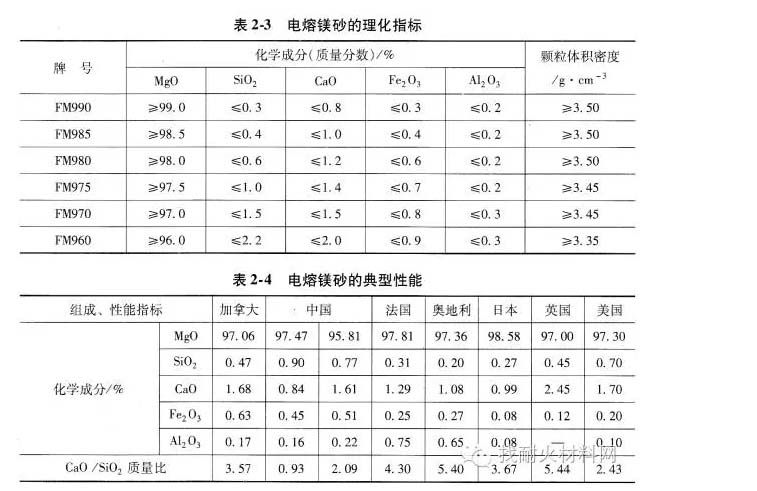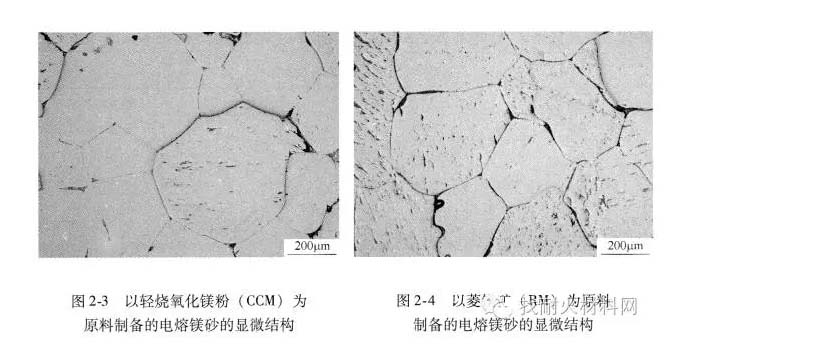These properties of sintered magnesia and fused magnesia affect the quality of refractories
Refractory materials have a direct effect on the properties and quality of refractory products. Only the varieties and grades of refractory materials are improved continuously, can the varieties of refractories be increased and the properties and quality of refractories be improved continuously. The production of high quality magnesia-chrome refractories is also dependent on high quality raw materials. China has abundant magnesia refractory raw materials, but the instability of refractory raw materials quality has been a big problem that restricts the development of our refractory industry.The development of refractory industry is due to the backward mining and processing methods of refractory materials in China for a long time. Therefore, it is very important to know the basic properties of magnesia and magnesia-chromite refractories and the research status at home and abroad to improve the quality of existing raw materials and to develop high-performance refractories in China.
magnesian refractory
Magnesia refractories refer to MgO-based components and magnesite-based crystalline phase of the raw materials. Magnesite and the magnesite produced by calcining or melting. Light-burned magnesia powder, sintered magnesia, fused magnesia and seawater magnesia or brine magnesia made from seawater or brine are all magnesia refractories. In this paper, the preparation principle, physical and chemical indexes and microstructure characteristics of sintered magnesia and fused magnesia are briefly introduced.

sintered magnesia
Sintered magnesia is the magnesia raw material obtained by calcining magnesite and brucite, or by fully sintering magnesium hydroxide from seawater or brine at 1450-1900℃. In China, sintered magnesia is usually the product which is calcined from magnesite. The magnesia produced by calcining magnesia from seawater or brine is called seawater magnesite or brine magnesia. Because of the high sintering temperature and good sintering degree of magnesia, sintered magnesia is also called dead burned magnesia, which is different from the light burned magnesia.
In industrial production, the method of direct briquetting of magnesite is usually called one-step calcination. And the magnesite is fired at about1000℃, then the briquetting and sintering process is called two-step calcination. Classification of sintered magnesia according to MgO content, particle volume density and Ca_0/ SiO_2 ratio as the main classification methods in the world, China national standard GB/T2273-2007 provides for the technical conditions of sintered magnesia for refractories, see Table 2-1.

The calcite crystals in sintered magnesia are mostly irregular granular, and the size and shape of the crystals depend on the purity and sintering degree of the raw materials.
Fig. 2-1 shows the microstructure of sintered magnesia with DBM-97 produced by Chinese. The crystal size of magnesia is 80-130um, and the dark gray intergranular phase is C2S, and the intergranular pores are polycrystal.
Figure 2-2 shows the microstructure of sintered magnesia with high iron in the Alpine Mountains. The crystal size of magnesia is 120-180um, the bright white intergranular bonding phase is C2F and MF, and the polycrystal pores. The physical and chemical indexes, such as chemical composition and bulk density, are shown in Table 2-2.

fused magnesia
Fused magnesia ( FusedMagnesia) is a kind of magnesia material which is made from natural magnesite, light-burned magnesia powder or sintered magnesia at high temperature in an electric arc furnace, Because its strength, corrosion resistance and chemical inertness are better than sintered magnesia, sintered magnesia is increasingly replaced by sintered magnesia in magnesia and magnesia-carbon refractories.
The metallurgical industry standard YB/T5266-2004 in China divides the fused magnesia into six grades according to physical and chemical indexes. The technical conditions are shown in Table 2-3. Typical properties of fused magnesia produced worldwide are shown in Table 2-4.


Figs. 2-3 and 2-4 show the microstructure of fused magnesia prepared from light-burned magnesia powder and magnesite, respectively. The chemical composition and bulk density of the two are shown in Table 2-2.
From Figures 2-3 and 2-4, we can see that the microstructure of fused magnesia is big, and the crystal size is several hundred microns or more, the crystal is more direct and the silicate phase is less. When magnesite is used as raw material, there will be more intercrystal or intragranular pores.

Compared with sintered magnesia, the silicate phase content in fused magnesia is low and the direct combination of magnesite is high, which can give full play to the good properties of magnesite. In addition, because the slag is corroded from the grain boundary of magnesite, the corrosion resistance of magnesite is much stronger than that of magnesite in sintered magnesia, because the slag is corroded from the grain boundary of the magnesite in large crystallized magnesia.
Therefore, in recent years, countries around the world have strengthened the research and development of large-crystalline fused magnesia. The average dimension of periclase in large crystalline magnesia produced by sintering is 60-200um, However, the crystal size of magnesite is 200-400um in the general fused magnesia, and the large fused magnesia can reach 700-1500um, or even above 5000um. Table 2-5 gives a comparison of the properties of large crystalline magnesia and other magnesia.

However, Gao Zhenxin put forward his own viewpoint from the angle of microstructure for the big crystallized fused magnesia. He thought that it was reasonable to require large crystals for high purity, but large crystals had the defects of low structural strength if the purity was related to crystal size.
This is because, firstly, the large crystallographic cleavage is well developed and easily cracked along the cleavage plane; Secondly, the large crystals are mostly straight grain boundaries, and the intergranular cracks are easy to occur after the stress. Therefore, it is easy to break the particles in the course of forming brick with fused magnesia. In the production of high-grade magnesia products abroad, seawater magnesia is often used to make large particles (2-5mm). The intermediate particle (0.1-1mm) made of fused magnesia may have been used to prevent the particle from being crushed during the forming process.







 TEL
TEL SERVICES
SERVICES MAP
MAP TOP
TOP